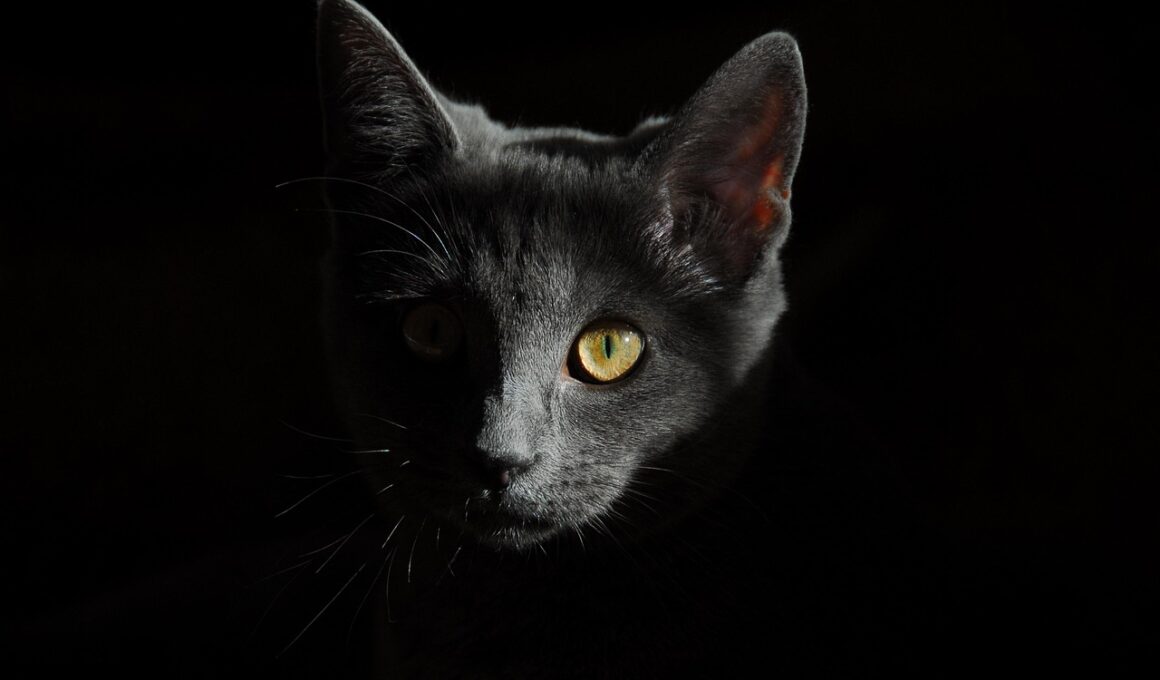What to Do if Your Cat Has Sustained a Head Injury
When your feline experiences a head injury, your first instinct may be panic. Staying calm is crucial. You should evaluate the situation clearly and understand the signs that indicate it’s time to contact your veterinarian. Look for symptoms such as confusion, lethargy, or any unusual behavior. If your cat appears disoriented or unresponsive, immediate veterinary care is essential. Minor injuries may not always warrant immediate attention, but monitoring their behavior over time can be beneficial. If you notice swelling, bleeding, or distorted appearance, these signs are often indicative of a more serious injury. Assess your cat thoroughly for any other accompanying symptoms, including vomiting or a lack of appetite. Head injuries can impact their balance, leading to falls or difficulty walking. If your cat experiences seizures or tremors, you must seek veterinary help immediately. Always err on the side of caution; your cat’s health and safety are paramount. Remember, even if your cat seems fine, underlying issues may still exist, warranting a vet visit for a proper diagnosis and treatment.
After determining whether your cat needs to see a vet, make sure to keep them as comfortable as possible during the assessment. Head injuries can cause discomfort and stress. Create a quiet, calm environment for your cat, away from noise or other pets. Ensure they are lying down in a cozy spot where they feel secure. If possible, gently examine their head for any obvious wounds or swelling. This inspection should be done carefully to avoid causing the cat additional pain. In the event of bleeding, try to stop it by applying a clean cloth to the area. Monitor the severity of any injury and keep track of behavioral changes as you wait for veterinary assistance. You could incorporate soft music to help soothe your cat in this situation. If your cat’s behavior worsens or new symptoms manifest, prepare to seek medical help urgently. This can be a stressful time, so ensure you stay calm to provide reassurance for your pet. Always have the contact information of your vet readily available, along with emergency numbers, to expedite care.
Signs of Serious Head Injury
Recognizing the signs of a serious head injury in your cat is vital for timely intervention. Pay attention to the following symptoms: bleeding from the mouth, nose, or ears may indicate a serious problem. Likewise, if your feline has difficulty standing or shows a lack of coordination, these are immediate red flags. If your cat is unresponsive for over a minute or has lost consciousness, do not wait; get to a veterinarian as soon as you can. Loss of vision or one-sided weakness could result from a severe head injury and can escalate quickly. Additionally, persistent vomiting or seizures are indicative of a serious condition requiring emergency care. Swelling around the head or noticeable changes in behavior and eating habits should also caution you to seek assistance. Should your cat suddenly become aggressive or overly anxious, this can suggest distress related to an injury. In such cases, being proactive can make a world of difference. Familiarizing yourself with these symptoms can ensure prompt action when necessary. Every moment counts when dealing with head injuries.
Once at the veterinary clinic, be prepared to answer questions regarding how the injury occurred. Information about any observed symptoms will help your veterinarian determine the best course of action. The vet may conduct a thorough physical examination, including checking for fractures and assessing neurological function. Diagnostic tests, such as X-rays or CT scans, might be needed to determine the extent of the injury. It’s important to provide your cat’s medical history, including any prior health issues they may have. After evaluation, the veterinarian will suggest appropriate treatment options. This may range from observation to surgery in more serious cases. Follow-up appointments are often necessary for monitoring recovery, particularly with head injuries. Always adhere to your vet’s prescribed treatment plan for various medication schedules and dietary changes. Encourage your cat’s recovery with gentle care and quiet rest. Being attentive during this phase can ensure a speedy return to their regular self. Following your veterinarian’s advice will promote healing and help prevent further complications.
Home Care After a Vet Visit
Once your cat has received treatment for a head injury, follow all post-visit instructions from your veterinarian. Providing a peaceful environment is essential for recovery. You can create comfortable resting places within your home with soft bedding and minimize noise disturbances. Maintain consistency in their feeding schedule, ensuring they receive adequate nutrition during recovery. Monitor for any signs of illness or unusual behavior that may indicate complications. Keep a watchful eye on their eating habits and litter box use during this period. If you notice drastic changes, contact your veterinarian immediately. Medication prescribed should be given according to instructions to manage pain or prevent infection. Never administer any over-the-counter medication without consulting your vet. Also, prevent your cat from engaging in vigorous activities that may hinder the healing process. Gradually reintroduce play once your cat shows signs of improvement. Investing time and care in nurturing your pet during recovery can speed up the healing process. Show extra love with gentle petting, as emotional support can further their sense of security during this critical time.
The recovery period for cats with head injuries varies based on the injury’s severity and individual healing rates. Most cats require close monitoring in the weeks following their incident. Attend all follow-up appointments to ensure the veterinarian can assess their progress correctly. Depending on the type of injury, your vet might suggest physical therapy to aid recovery. Behavioral changes following head trauma are sometimes observable, so being patient is key. Your cat might seem more fearful or anxious than usual, and providing a tranquil environment can help address those issues. Regularly engage in gentle activities that keep their spirits up without causing stress. Being alert to changes in appetite and energy levels will enhance your insights into your cat’s health. It is crucial to keep in communication with your vet about noted changes in behavior or any new symptoms. Should any concerns arise, do not hesitate to reach out. With time and care, many cats can make a satisfactory recovery. Understanding their needs through this phase strengthens the human-animal bond.
Conclusion on Vet Visits for Cat Injuries
Knowing when to take your cat to the veterinarian for an injury is vital for their well-being. A swift assessment can prevent minor injuries from escalating into serious conditions. Cat owners must familiarize themselves with the signs of potential head injuries and not second-guess their knee-jerk reactions. Whether it’s minor or severe, your cat’s health outcomes may heavily depend on your timely actions. Always prioritize seeking veterinary assistance if you feel uncertain about the situation. Keeping track of their behavior over time can lead to more effective care. Furthermore, the emotional support you show during recovery can profoundly affect their healing process. Cats often find solace in the familiarity of their environment, so create a calm and cozy space for them. Remember that maintaining health after an injury is just as important as immediate treatment. Your dedication to caring for your feline friend affirms the bond you share. Together, with the correct approach and professional guidance, your cat can overcome challenges related to head injuries satisfactorily.
In conclusion, never underestimate the importance of addressing your cat’s head injuries. Staying informed about signs of potential head trauma can save lives. Understanding what actions to take ensures effective communication with your veterinarian and facilitates a positive healing experience. Remember, your proactive involvement plays a critical role in your cat’s recovery journey.


